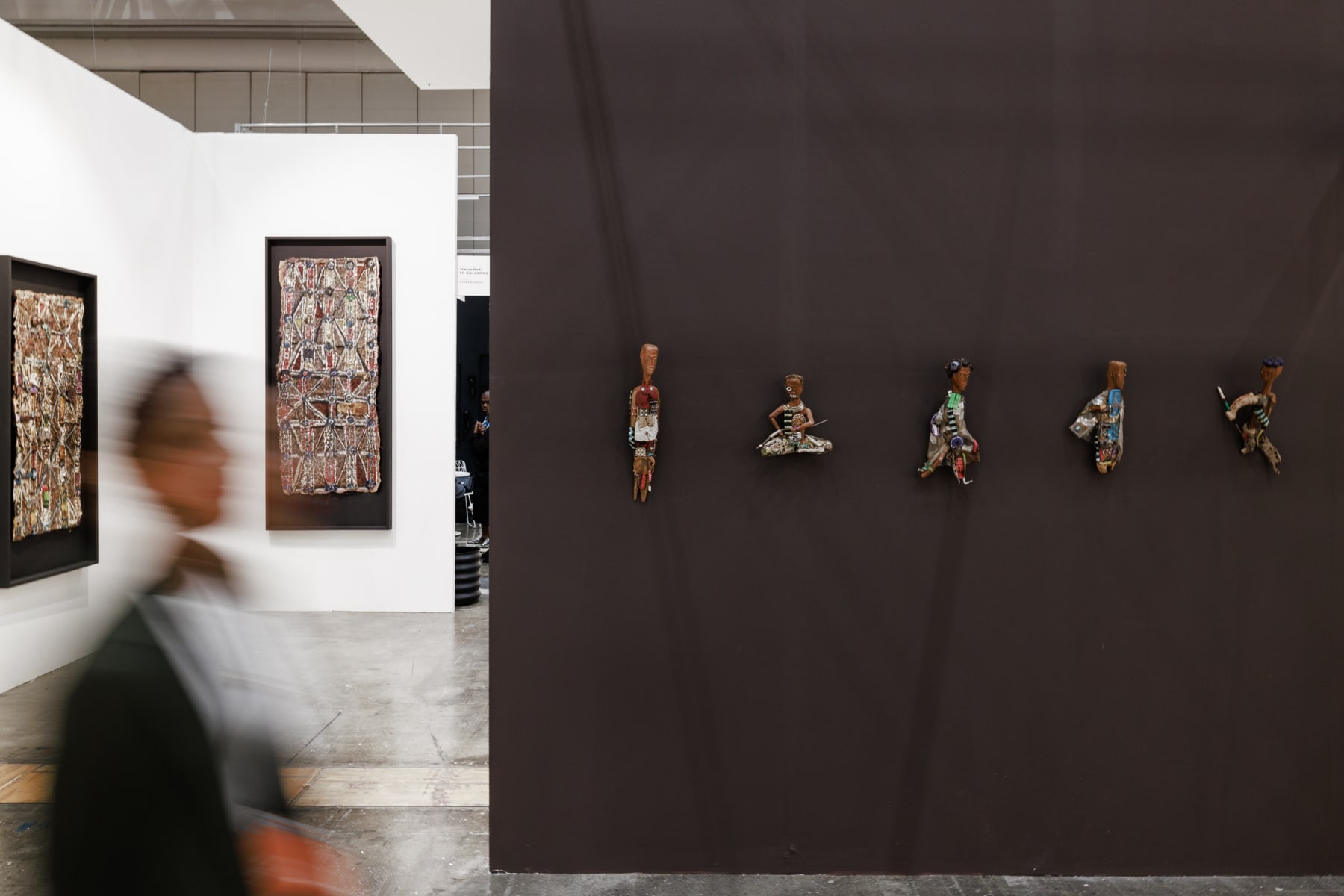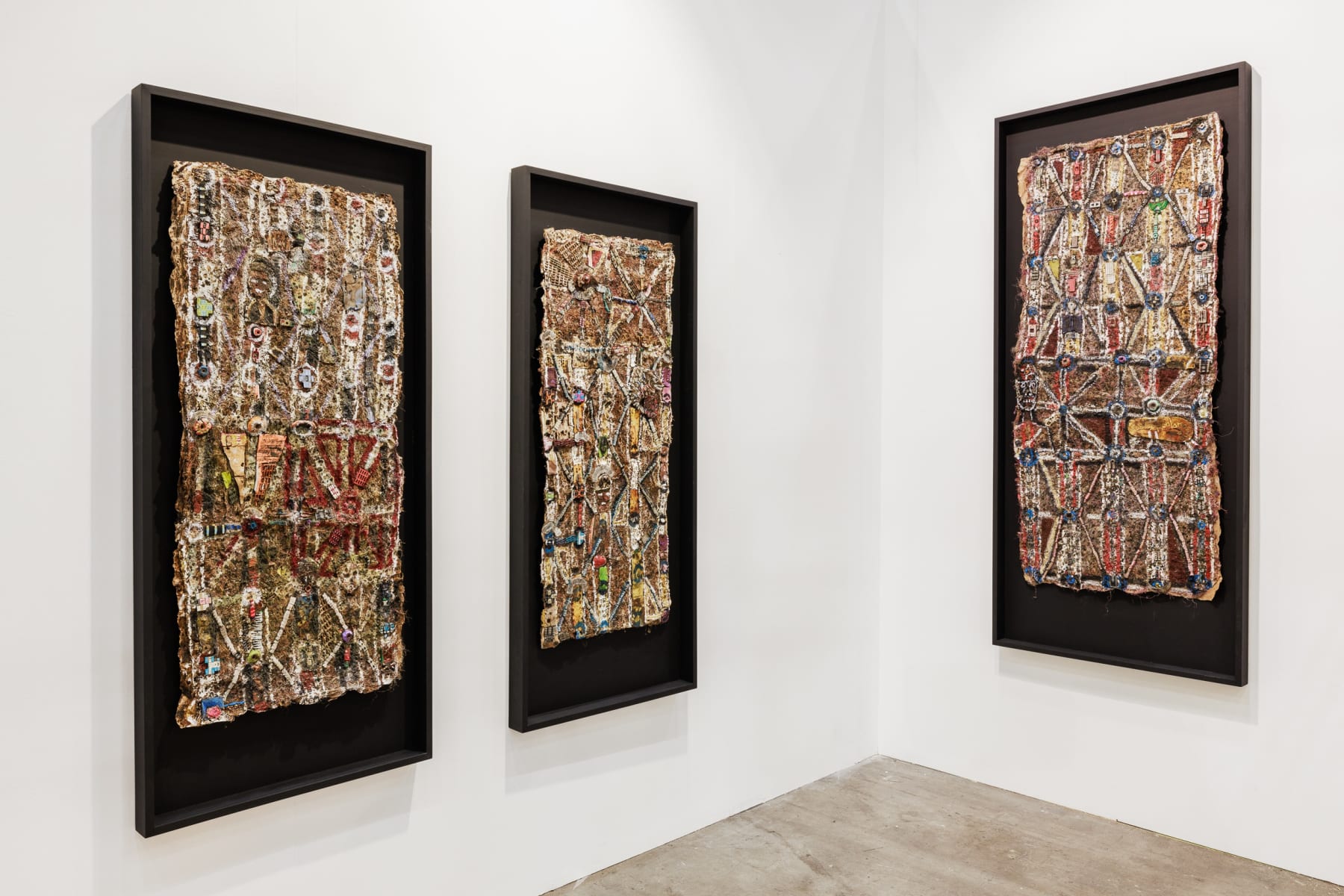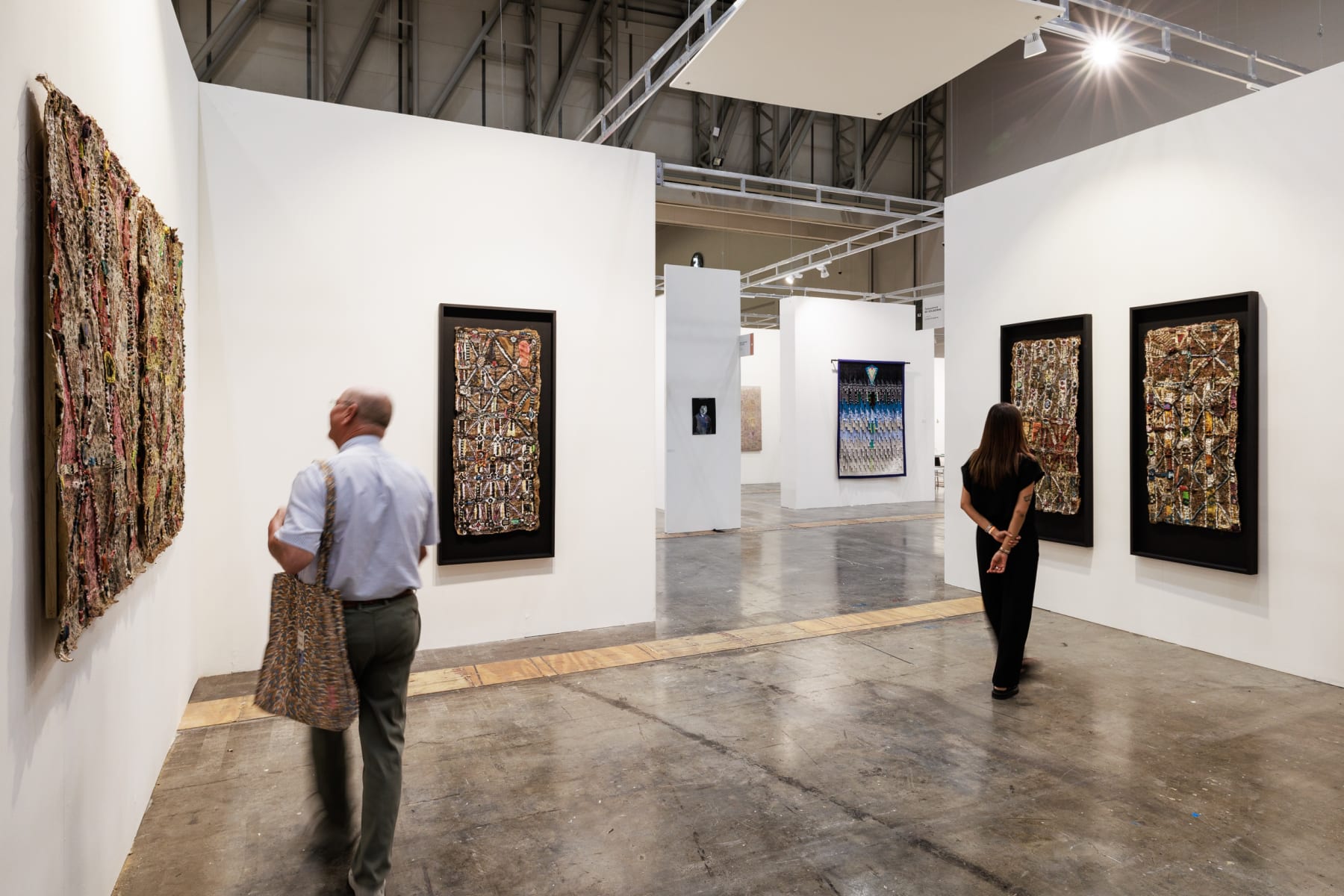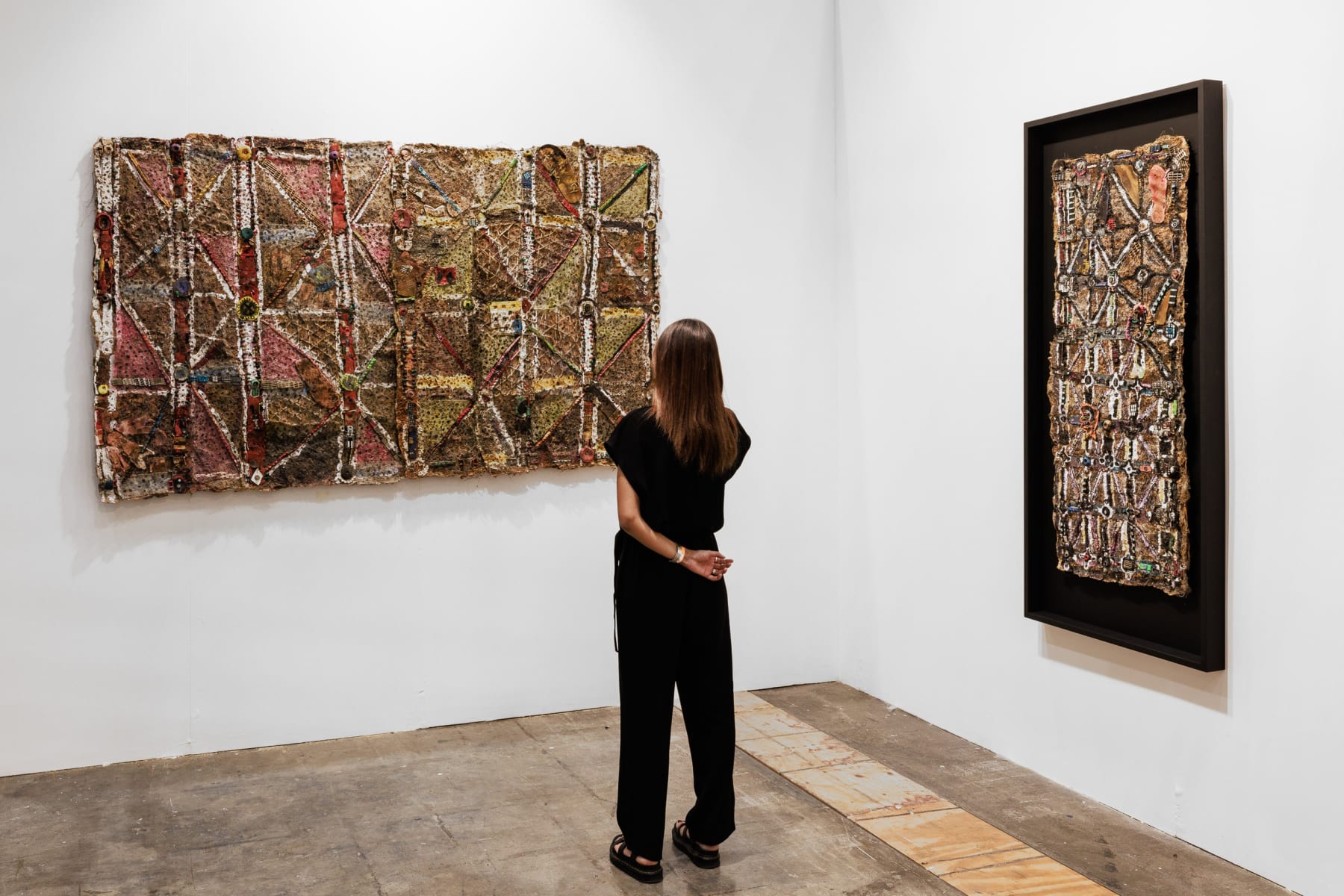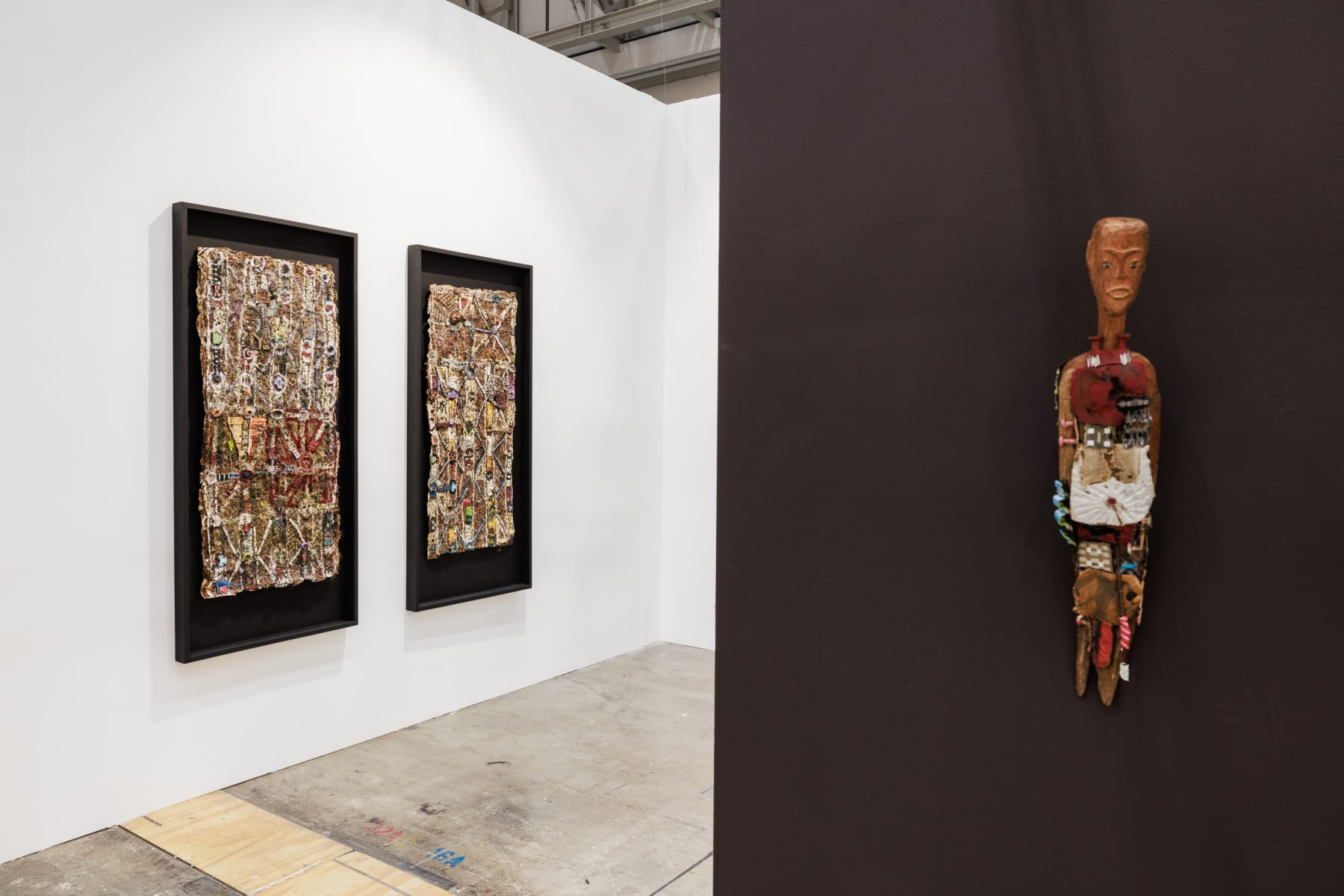Investec, Cape Town 2025: Temandrota
Overview
 S2
S2
TEMANDROTA, “PLAY: Shaping Worlds and Selves”
In his latest body of work, Malagasy artist Temandrota delves into the historical, anthropological, and political dimensions of play, revealing its profound influence on his artistic philosophy.
At the heart of this exploration lies the ancient Malagasy strategy game, Fandron Tsivy, whose origins trace back to Arab traders in the 16th century. Further developed by King Ralambo during his territorial expansions, Fandron Tsivy evolved into a cultural mainstay across all levels of Malagasy society. This intricate game, blending strategy with folklore, assigns symbolic meanings to its moves, drawing on Malagasy mythology with characters such as ogres, warriors, and risk-takers. The game’s numerological underpinnings—like the number five symbolizing tree sap and vitality—link it to Madagascar’s historical and spiritual narratives.
Building on these themes, Temandrota has created a series of wall works and sculptures that engage with Fandron Tsivy both visually and metaphorically. His art becomes a personal strategy, reflecting his playful and experimental approach to creation. Drawing on notions of territory and resourcefulness, Temandrota incorporates earth collected during his travels across Madagascar. For him, the freedom of movement is central to his practice, mirroring the fluid and adaptive nature of play.
His process is as dynamic as his themes. Employing fire to ‘cook’ his materials, he crafts rich impastos from a mixture of earth, eggs, acrylic paint, and other secret ingredients. These materials shift in texture and tone with time and temperature, a nod to the inherent risks of creation. For Temandrota, this risk-taking echoes the resilience required to navigate Madagascar’s societal and power structures.
The artist further animates his works by gesturally applying these materials to handmade paper pulp, integrating rainwater as a vital element of his process. Collaged with sisal, discarded flip-flops, and scraps of telephones sourced from local markets, his compositions feature long-toothed creatures—reminiscent of Fandron Tsivy pawns—arranged in dynamic layouts that evoke themes of movement, consumption, and guidance.
Through this multifaceted presentation, Temandrota transforms his booth into a microcosm of playful experimentation. By intertwining the ancient and the contemporary, the personal and the political, he reimagines the concept of play as a tool for shaping worlds and selves.
